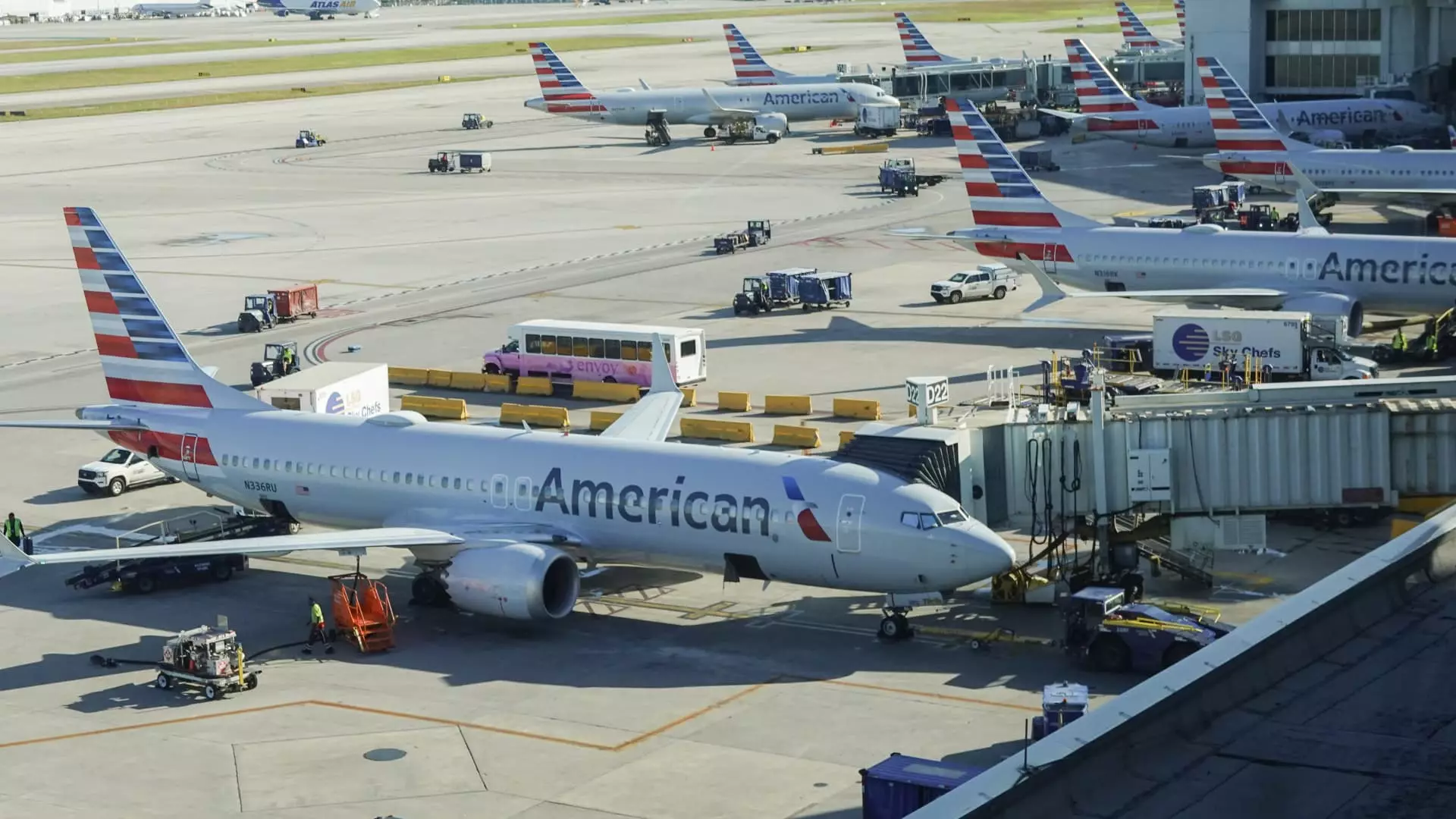On a busy Tuesday morning, American Airlines faced a significant hiccup, grounding all its flights across the United States due to a technical issue stemming from a partnered vendor’s platform. This disruption came at a time when travel demand was projected to be exceptionally high in anticipation of the holiday season. Although the ground stop was lifted within just under an hour at 7:55 a.m. ET, the incident serves as a poignant reminder of how fragile airline operations can be, particularly during peak travel times.
Understanding the Nature of the Disruption
The root of the problem was identified as a malfunctioning system associated with crucial data regarding aircraft weight and balance—information essential for ensuring safe take-offs. American Airlines promptly acknowledged the issue, stating that it was resolved swiftly. However, this interruption highlights the increasing dependence on technology within the airline industry and the repercussions that can follow when systems fail.
Ground stops are not a novel occurrence; they are routinely implemented during various disruptions, such as severe weather or technical failures. The Federal Aviation Administration (FAA) confirmed that American Airlines had specifically requested this grounding to prevent congestion at destination airports. By pausing flights at origin points, airlines can prevent airports from becoming overwhelmed with incoming flights without adequate parking space. The strategy is practical, yet it raises questions about the robustness of technology systems that airlines rely upon.
Recently, the airline industry has faced scrutiny related to its technology infrastructure. Notable incidents such as Southwest Airlines’ operational chaos during the 2022 holiday season and Delta Airlines’ challenges following a cyber disruption last summer have sparked discussions on the reliability of these critical platforms. Each of these events underscores a growing concern: as airlines modernize their operations and integrate more technology, the risks associated with these systems also escalate.
The Traveler’s Perspective
For the average traveler, incidents like the one experienced by American Airlines may lead to frustration and uncertainty. While no flights were officially canceled due to this specific disruption, the very thought of being grounded can evoke anxiety, particularly during one of the busiest travel seasons of the year. Airlines often issue apologies, yet the inconvenience experienced by customers cannot be understated, as plans can change rapidly when flight schedules are disrupted.
In sum, the technical glitches faced by American Airlines on that Tuesday morning serve as a microcosm of the larger challenges confronting the aviation industry. The reliance on intricate technology systems, combined with the unpredictability of air travel during peak times, necessitates continued vigilance and improvement in these platforms. As airlines gear up for record holiday travel, strengthening technology infrastructure and crisis response strategies will be crucial for minimizing disruptions and ensuring a smoother journey for all travelers.


Leave a Reply